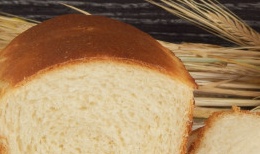



As a rule, it is customary to cook custard bread with rye flour, but wheat bread, according to this principle, turns out to be very tasty. By adding flour brewing, ready-made milk bread will delight you with a porous and fluffy crumb, delicate aroma of milk and a golden brown crust.
By the way, in addition, thanks to flour brewing during fermentation, the dough for wheat bread grows even better, acquiring the necessary airiness. And the finished baked goods remain fresh for a long time and do not stale. Custard milk bread is delicious on its own, goes well with jams and preserves. With a cup of aromatic tea or coffee, a slice of this bread with butter is a great start to the day!

As a rule, it is customary to cook custard bread with rye flour, but wheat bread, according to this principle, turns out to be very tasty. By adding flour brewing, ready-made milk bread will delight you with a porous and fluffy crumb, delicate aroma of milk and a golden brown crust.
By the way, in addition, thanks to flour brewing during fermentation, the dough for wheat bread grows even better, acquiring the necessary airiness. And the finished baked goods remain fresh for a long time and do not stale. Custard milk bread is delicious on its own, goes well with jams and preserves. With a cup of aromatic tea or coffee, a slice of this bread with butter is a great start to the day!
Sign up to receive email updates on new recipes.